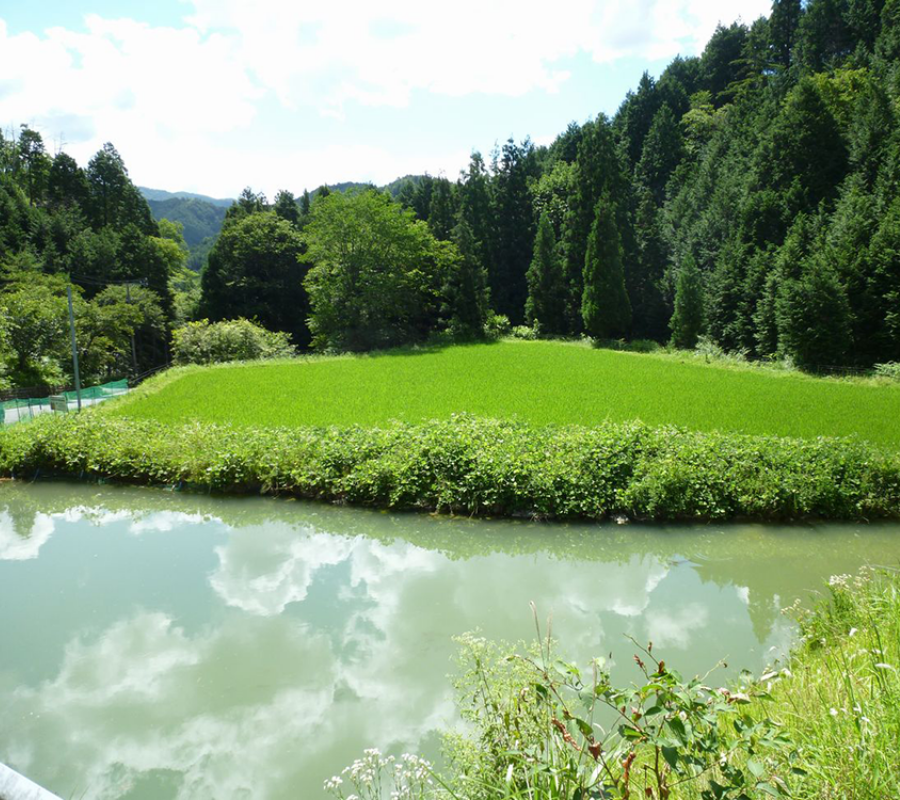Interview from 2011
Gifu Prefecture Yuuki Heart Net – Former Chairman Katsumi Nakajima
Katsumi Nakajima, the former chairman of Yuuki Heart Net, the parent organisation of the Shirakawa Town Organic Village Development Council in Gifu Prefecture, has been practising organic farming for many years and is a leader of the council. About 30 farmers who grow rice, soybeans, vegetables, etc. are members of this council, and they continue to actively participate in activities such as holding regular workshops.
In Mr. Nakajima’s 17 acres rice field, a thick layer of powdery soil covers the soil, suppressing weeds and successfully implementing labour-saving organic rice farming that does not require weeding. The microbial performance index is over 1.4 million, the highest in Japan. We asked Mr. Nakajima about the farming methods and other topics.
Q. What did you think when you saw the results of the BIOTREX analysis?
The state of the soil biology was shown numerically, and I knew that what I had done was undeniable. So far, I have not been able to persuade others to say verbally, “This is good soil”. In the future I hope to be able to explain the condition of the soil to other people using numbers.

A plate with analysis result of Mr. Katsumi Nakajima’s paddy rice field. Microbial performance index value is 1,430,264.
Q. Please tell me about the cultivation method you are practising.
Until three years ago, I added wheat bran every year. After the rice is planted, earthworm and microorganisms break down the organic matter, creating a thick layer and deepening the soil. Because the seeds are heavy, they sink to the bottom, and the muddy layer blocks the sunlight, so weeds cannot grow. In other words, almost no work is required from planting to harvesting.
Q. So you were able to implement labour-saving organic rice farming?
That’s right. Actually, I was looking for a low-labour method of rice cultivation other than duck-rice farming. I started to reduce pesticides in 1989, and I did duck-rice farming for about five years from 1996.
However, I realised that there was a problem with biodiversity because the ducks were eating the living things in the rice field, and I changed to the current method in 2002. As I searched, I think I finally found a way to do it. It is ideal to put rice straw and rice bran back into the rice field and make it a complete circular agriculture.

Muddy layer that suppresses weeds.

Paddy fields full of tadpoles.
Q. What is the reaction of consumers and people around you?
We are famous for the delicious taste of our rice. The umami flavour is particularly noticeable in brown rice. The rice field is also home to a variety of living organisms, including frogs. I think the living things in the rice field, including micro-organisms, make this “delicious rice”. The rice yields about 360 to 420 kg per 10 acres, but because of its superior taste, it sells for more than twice the price of conventionally grown rice.

Fields are surrounded by mountains. Irrigation ponds make winter-fed rice fields possible.
Q. Please tell us about your plans, including the use of BIOTREX analysis.
Weeding in organic rice farming is difficult and has not yet become popular. Anyone can practice labour-saving organic rice farming by using organic rice farming methods based on the technology of private rice research institutes. I hope this farming method will spread throughout the country.
Thanks to your support we have been able to achieve a certain level of microbial activity and diversity in the soil. I would like to continue to do regular tests to confirm what I have done and if the level drops, I would like to use it to check where the problem is.

